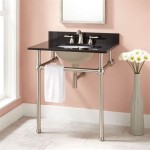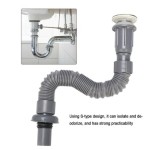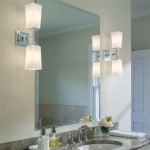Should You Tile Behind Bathroom Vanity? Essential Considerations
Remodeling a bathroom can be an exciting yet daunting task. One crucial decision you'll face is whether to tile behind the bathroom vanity. While it may seem like a small detail, this choice can significantly impact the aesthetics and functionality of your bathroom.
Benefits of Tiling Behind Bathroom Vanity
There are several advantages to tiling behind the bathroom vanity:
- Protection from Moisture: Bathrooms are prone to moisture, which can damage vanity cabinets and walls over time. Tiling creates a waterproof barrier, protecting your vanity from water damage and mold growth.
- Enhanced Aesthetics: Tiles come in various colors, patterns, and textures, allowing you to customize your bathroom to match your taste. They can create a cohesive look and add visual interest to the space.
- Increased Durability: Tiles are more durable than paint or wallpaper, making them resistant to scratches, dents, and stains. This ensures a long-lasting finish for your bathroom.
- Easy Maintenance: Tiles are easy to clean and maintain. Unlike paint, they don't require repainting, and wiping them down with a damp cloth is sufficient for daily cleaning.
Considerations for Tiling
While tiling behind the bathroom vanity offers benefits, there are some considerations to keep in mind:
- Cost: Tiling is typically more expensive than painting or using wallpaper due to the materials and labor involved.
- Space constraints: Tiling behind the vanity may reduce the available space within the vanity, which could be a concern for small bathrooms.
- Difficulty of installation: Tiling requires precision and expertise. If not done correctly, it can lead to uneven or poorly aligned tiles.
- Care for exposed edges: The edges of tiles exposed to the countertop may need to be sealed or treated to prevent water damage.
Alternative Options
If tiling behind the bathroom vanity is not a feasible option, there are alternative solutions to protect and enhance the area:
- Backsplash: A backsplash is a vertical strip of tile or another material installed behind the vanity countertop to protect it from water spills.
- Wallpaper: Waterproof wallpaper can be used behind the vanity to provide moisture protection and add a touch of style.
- Paint: Paint or a semi-gloss finish can be applied behind the vanity to create a moisture-resistant surface.
Conclusion
Deciding whether to tile behind the bathroom vanity is a personal preference. Consider the benefits and considerations discussed above to make an informed decision. If you prioritize moisture protection, durability, and aesthetics, tiling is a great choice. However, if cost, space, or maintenance concerns are paramount, alternative options like backsplash or paint may be better suited for your needs.

Bathroom Design Getting Tile Around The Vanity Right

Bathroom Design Getting Tile Around The Vanity Right

Do You Need A Backsplash For Your Bathroom Vanity Diamond Kitchen Bath
Backsplash Advice For Your Bathroom Would You Tile The Side Walls Too Designed

Do Bathroom Vanities Need A Backsplash

Bathroom Design Getting Tile Around The Vanity Right

Backsplash Advice For Your Bathroom Would You Tile The Side Walls Too Designed
Tiling A Bathroom Floor Does The Tile Go Under Vanity Hunker

Do You Tile Behind A Vanity Unit Commercial Washroom Refurbishment Washrooms

Backsplash Advice For Your Bathroom Would You Tile The Side Walls Too Designed
Related Posts







